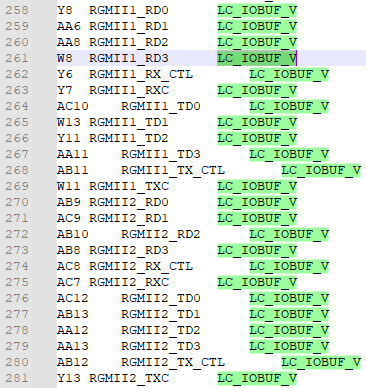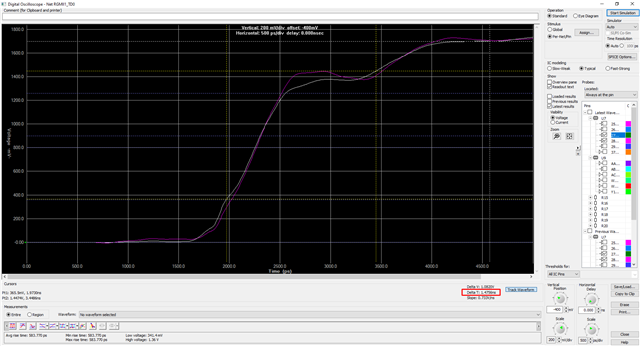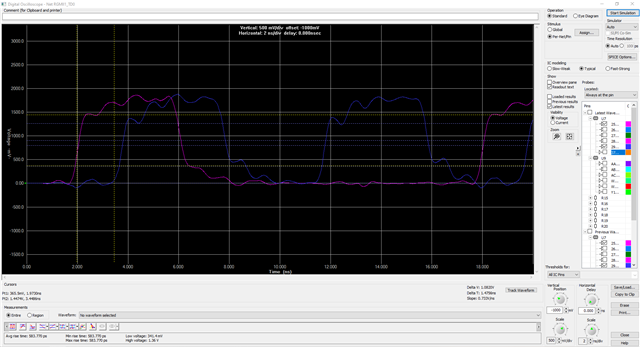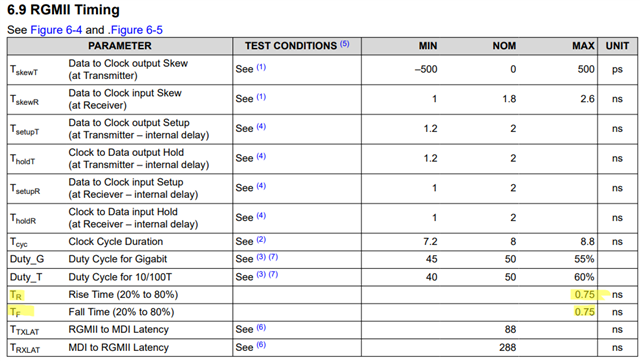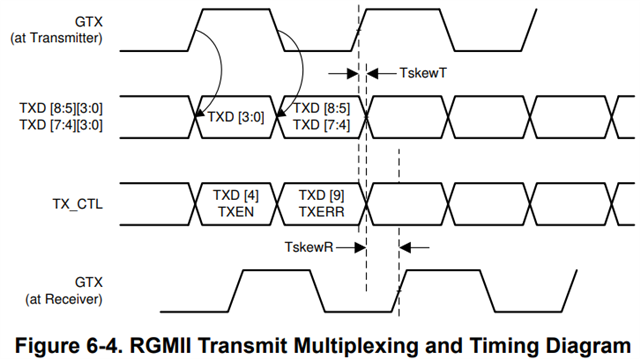Tool/software:
Hello!
I have a small issue with the integration of the AM62L. We are currently in the process of validation, but here we saw the RGMII signal which does not comply with the definition.
| Eye Diagramm | Rise Time | Fall Time |
|---|---|---|
 |
 |
 |
Rise & Fall time are beyond the 750 ps. The phy is only about 3 cm (trace length) from the SoC. We did tinker with the simulation a bit, and figured out, that a series termination of 60R should be used in order to match it with our measurment, but currently no series termination is used.
Same trace in the simulation with the IBIS models from the Ti website for the AM62L and the DP83867IRRGZ achieve a time of 760.4 ps, which would be a bit off, but I would happy if I got that.
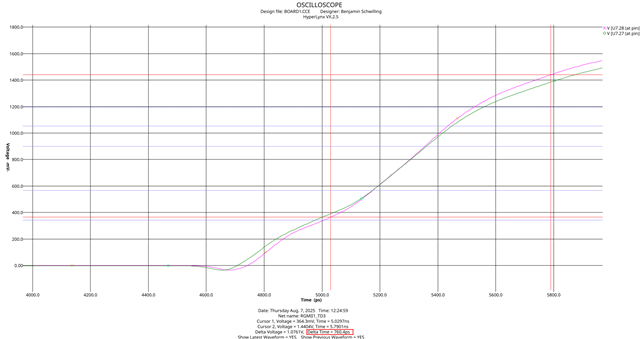
The software we use is Mentor Hyperlynx.
My question would be now, how come that the simulation is that different from the real world? We tried to tinker with the simulation and only get a matching result, if we insert a 60R series termination. Which is a lot.
So are possible the IBIS Models faulty? Have you validated these models with real measurement?
Cheers,
me


